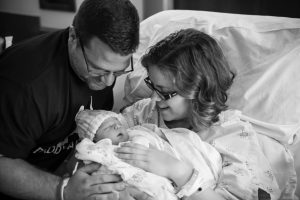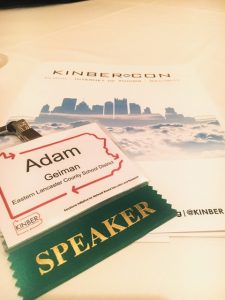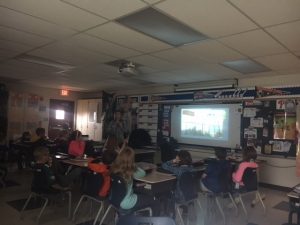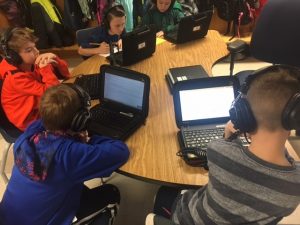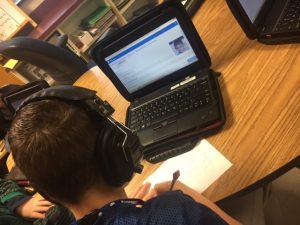There is a lot to learn in this challenge so it will be running for a two week (fortnight) period. The next challenge will be posted on 29 October. It is also a chance for classes that have been on Fall break or holidays to do some catching up. These activities also relate to Digital Citizenship week 2017 which runs in USA and Canada over this first week. Ideas from Edmodo as well.
Admin for this challenge
- Thanks to all those students, teachers and mentors who have been checking the student list for students mentioned more than once. If you haven’t checked yet, please make sure you are only listed once.
- Some students (who already have a mentor) will soon be deleted from the lists if they have not been participating in the challenge activities.
- I have visited hundreds of blogs recently. I have left a comment, or flipped the post to our magazine or have mentioned your post in the next blogging challenge post. Have you found one of your posts mentioned yet? Remember you need to leave me a link to one of your posts for me to visit.
Students and teachers please read this before doing the activities
This week’s activities are going to be fun but first there are some things you need to know so please read carefully.
I have been visiting many blogs over the last few weeks. Some students new to blogging have been writing some great posts while others who have been blogging for a bit longer have started adding videos and images to their posts.
Yes, this week we deal with using images, music and sounds in your posts.
But can’t I use any image, music or sound that is on the internet?
No, you must use creative commons or in some cases the fair use rule.
But where can I find these images, music and sounds? Can’t I use anything when I google an image?
No, your blog is public so you must use creative commons images, sounds, music and videos.
Sue Waters over at Edublogs has created a student blogging bootcamp with lots of interesting posts. Check these out (mainly Edublogs but many also relate to other platforms.) Other posts found here for Blogger blogs.
- Adding your own images or images you have created from apps
- copyright and creative commons images
- Adding videos
Other places to find information on creative commons
- Head to the creative commons website.
- Check out the CC wiki to find out what is happening in your country. What are the different licenses used?
- Teachers check out the education section of creative commons.
- Youtube allows creative commons for videos.
- Teachers: A fantastic guide to copyright, fair use and creative commons has been written by Ronnie Burt and I would suggest you read this to understand more about using images, music and video on your blogs. Also includes what might happen if you use an image etc incorrectly.
- Larry Ferlazzo also has a great “Best List for images” that you might want to check out as well.
Images
- Morguefile
- Open ClipArt
- Pics4learning
- Photosforclass including a review by CommonSense Education and how to cite
- Compfight website if you don’t have the plugin in your blog
Make sure you check out the links in the Tools to Use symbaloo above the header
Music and sound effects
Jamendo, CCMixter, post with 14 websites for music, post with 20+ websites for music, post with 55+ sites with sound effects
Now for the activities for this fortnight
Activity 1. Do some more research on the topic of attribution and licenses and perhaps create your own class video about using images, music and videos in class.
This video is the reaction of students in Mrs Yollis’ class when she mislabelled their artwork. How would you have felt?
Activity 2. Find an image or piece of music. Add it to your post (with attribution) and write a poem relating to the image or music. Invite your readers to write their own poems. Here is Fernando’s example, Samantha is confused
Activity 3. Similar to activity 2. Find an interesting landscape image (include attribution). Write the beginning of a story relating to your image. Remember to include a conflict of some sort between your characters. Invite your readers to finish the story. How many different endings can you get? Which ending do you prefer? You might need to visit some other bloggers and invite them to finish your story. Remember to leave the URL of your post for them to click on.
Activity 4. Write a sentence using just images – no words OR find 5 images that create a story – again no words only the attribution for each image.
Activity 5. Create a slideshow, photo gallery or poster about your interests to add to your about me page or as a separate post. Your final slide should include attribution for each image. Noah created a great gallery with captions
Activity 6. Create your own images and add to a post of your choice. In your post add a link to the website or tool you used to create your image.
Other options for creating your own images include:
- Comic Generators like MakeBeliefsComix.com, ToonDoo
- Photo Editors like Befunky, fd’s Flickr Tools
- Tag Cloud Creators such as Wordle
Mixing up your images using these types of tools can really spice up your posts! Leave a comment on this post, if you or your class can recommend some other image sites to add to this list.
Activity 7. Zoom out from an image
We first tried this activity in the challenge in September 2010. Choose a picture, and have your readers zoom out, so to speak, by leaving comments. Check out the example from Huzzah who finished their story. If doing this activity, include the word ‘zoom’ in your title so I can find it easily. Remember to give attribution. Most important here is to read previous comments, so you can add to the story.
Check out these zoom pictures: Becky, Jacqueline, Abbey
Activity 8. Go back to previous posts
If you have used images in any previous posts you have written, then you are ethically obliged to give the correct attribution or take the image out of the post if it does not have the right creative commons license.
Activity 9. Create a jigsaw from your image. Mrs Schmidt’s class has done this using Jigsaw Planet . Here is her explanation
Last week (2014) my students made some jigsaw puzzles about famous places in our area. First each student created one Power Point Slide showing a photo and some facts about a location in our area. They saved the slide as a JPEG and then uploaded it to Jigsaw Planet. Once the puzzle was created, they published a link to it on their Kidblog. Click on Niamh’s puzzle link. Maggie created a tough jigsaw. Anishacreated a jigsaw from her avatar.
Activity 10. Make a game using images. This class in Australia based their game on 4pics 1 word app.
Still got time left this fortnight (two weeks):
- Visit other student and class blogs – leave some quality comments
- Teachers – have you started visiting blogs listed on the class list of blogs? Maybe pair up your students with those on the other class blogs.
- Reply to comments on your own blog
- Start using tags and categories with each post you write to make it easier for people to find posts on certain topics. Make sure you have the tags and categories widgets in your sidebar.
- Have at least five other student blogs linked on your sidebar – students from other classes and schools – not your own. We will need this for a game we play in a couple of weeks.
Try to have a few different headings like
My Blogging Friends
Other Class Blogs
Having lots of links to student blogs from other countries will help spread the game.
Here are the instructions for adding links to your sidebars.
Edublogs, Blogger, Kidblog – not sure if this widget goes on the class page or each student page
Still got time to read more posts
Mrs Caudill’s class wrote great introductions then wrote about their avatars
Check out all the interesting links, including student blogs, on the sidebar of the Tech Kids blog
Phakamon created a commenting recipe
Make sure you leave a blog link on Summer’s blog when you comment or it might go in the trash
Most important learning from this fortnight’s challenge is:
Use creative commons images, not just any image on the net. Always include attribution of where you found the image. Compfight plugin does this for you.
PS If you have done the blogging challenge before, you will find these activities are nearly the same each time. If you have ideas for different activities please leave a comment on this post.
Flipboard magazine
I will only be adding posts to the flipboard magazine that:
- are written in paragraphs
- have been proofread
- include an image, sound or video with attribution
So make sure you have taken note of this week’s learning about creative commons.
Miss W visiting your blogs
From this week onwards, I will only be visiting blogs where students or classes have left the URL to the post in a comment with an explanation. If your teacher is moderating your posts, you will need to wait until it has been published before giving me your URL. Check out the difference between a blog URL and a post URL.
Blog URL: http://studentchallenge.edublogs.org
Post URL : http://studentchallenge.edublogs.org/2015/10/10/raise-your-voice/
Great game to play about being internet awesome from Google – found this in a comment on Edmodo


